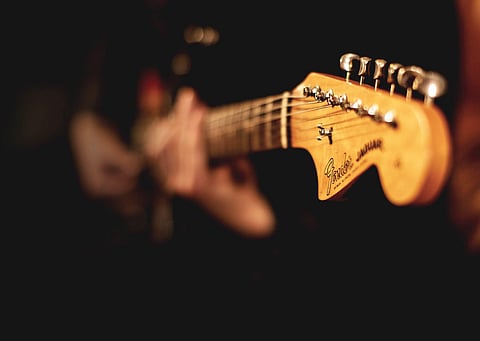

BENGALURU: Back in the day, listening to music was an extremely social experience. Music used to play on loudspeakers during weddings, loud enough to end the neighbours’ happy marriages. Music shops announced their arrival by blasting the latest chartbusters to the stratosphere. Songs were also played at railway stations and bus stops.
The other sources for listening to music were Chitrahaar and Rangoli on television. And later on Channel V and MTV (before these channels began to cater strictly to bodybuilding teenagers). Music channels played songs all around the clock, and one really didn’t need to pay to listen to music.
If one wished to pay and own music, there were a few options. One could purchase an audio cassette — either a pirated mixtape, or the original one with the lyrics printed on the cover. When technology moved ahead to CDs, one could either buy the original CD, or resort to MP3 — that featured hundreds of songs in one magical CD. This would then be played at home, on a DVD player-cum-VCD player-cum-MP3 player-cum-cassette player-cum-washing machine-cum-juicer/mixer/grinder!
When music was played at home, it was on the ‘Deck’ — loud enough for everybody at home to listen to. The deck was the music’s central nervous system — with black wires connecting to speakers set up all around the house. Walkmans were popular around the world, but the batteries were expensive to keep purchasing, and so one simply listened to music in public.
Since there was no concept of personal listening, one had to be mindful of the other people listening to the songs. For example, every time I played the songs of the film Mohra, I fast-forwarded and skipped the saucy Tip tip barsa pani song, as a mark of respect for my grandmother (and to avoid getting spanked by my parents!). And it wasn’t just the listening of music, even the performance of music was a social experience. We sang when guests visited our homes, or during antaksharis, or together during weddings and annual day functions.
The process of listening to music has become extremely personal today. It all began when phones began to provide 3.5 mm jacks and free earphones. FM radio was a coveted feature, and the youth of my generation began to listen to Love Guru whisper away all the problems of the world. By the time the 3.5 mm jack was removed from phones, entire generations were already hooked. Bluetooth headphones gave way to earphones, and eventually to ear-buds. Today’s ear-pieces promise to be ‘truly wireless’, and block out the world under noise-cancellation.
We don’t pay for music anymore. Instead, we only pay for the devices we choose to listen to music through. When we sing songs, we do so alone — in front of our phone screens — to be broadcasted to strangers across the world. In earlier times, one had to listen to a few mediocre songs before our favourite songs played. Today, music apps curate our interests into customised playlists based on our interests.
Surprisingly, with all the customisation, personalisation, and curation — I can’t remember what I was listening to yesterday. But play me a song from the ’90s, and I’ll be able to hum the chorus, the musical interludes, and entire paras. With the experience of listening to music going from social to personal, and the vanishing of audio devices and cassettes, perhaps what they say is true. Out of sight, has truly become out of mind for today’s music.
(The writer’s views are his own)